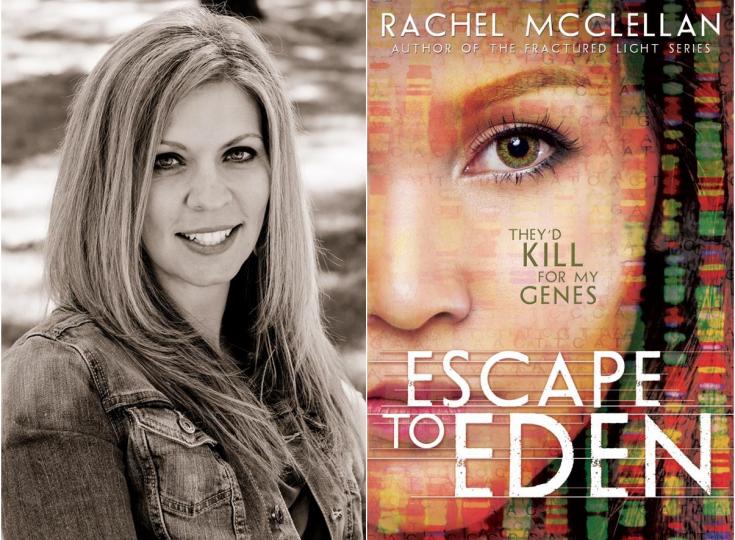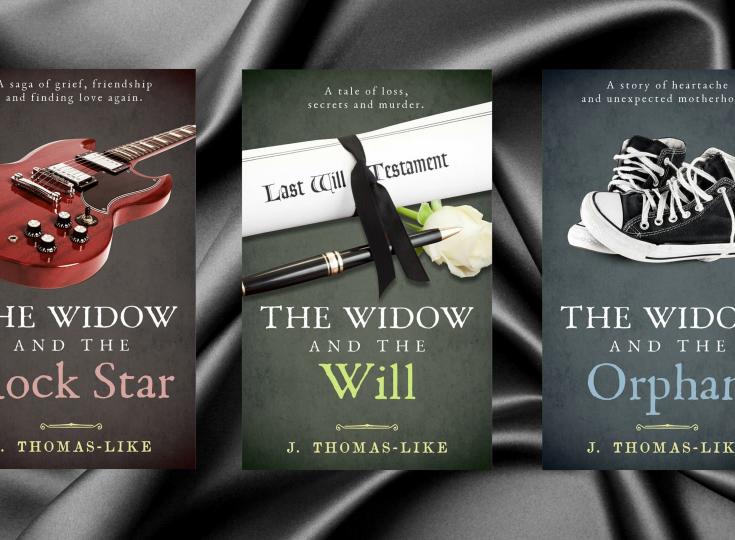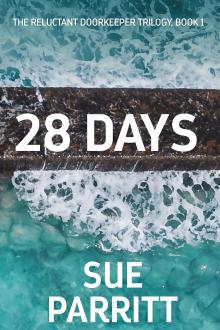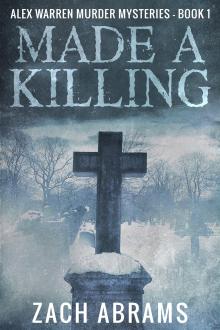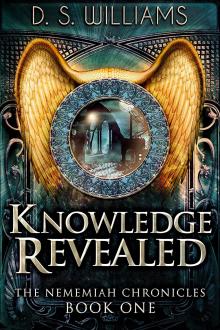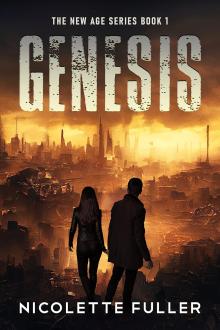Paul Austin Ardoin - Mysteries Featuring a Coroner
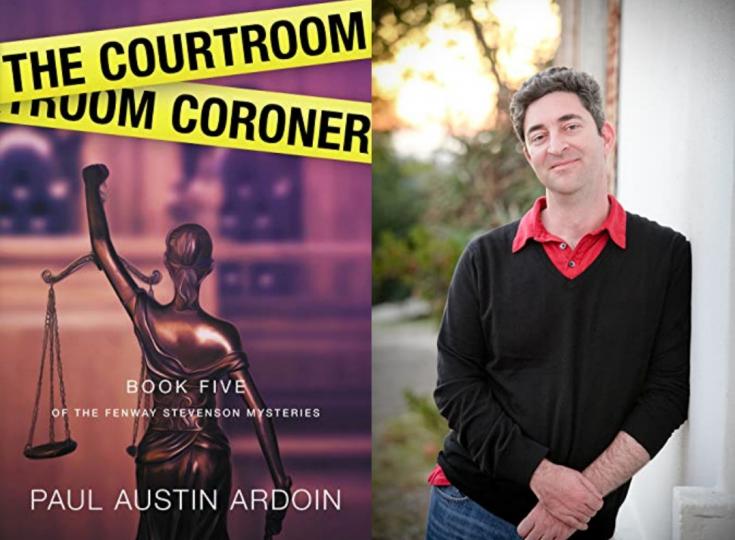
Paul Austin Ardoin is the Amazon bestselling author of The Fenway Stevenson Mysteries. Book 1, THE RELUCTANT CORONER, is his debut novel. He has published short fiction and humorous essays in the anthologies Bottomfish and Sweet Fancy Moses, and non-fiction works about computer security in California Computer News and European Communications. Paul is a California native who put his creative writing degree to use by authoring marketing materials for computer security companies for the better part of two decades. When he's not writing novels or trying to save the world through better computer security, Paul plays keyboards in a dance-rock band. He lives in the Sacramento area with his wife, two teenagers, and a menagerie of animals. As our Author of the Day, he tells us about The Courtroom Coroner, and his latest release, The Accused Coroner.
Please give us a short introduction to what The Courtroom Coroner is about.
County Coroner Fenway Stevenson is in the courtroom for the two biggest arraignments of her career: one for the murderer she captured the week before—and one for her father, also arrested for murder. Suddenly, a shot is fired—and in the ensuing chaos, Fenway is locked in the courtroom with twelve others. A man lies dead on the floor—and one of the people in the room is the killer. Can Fenway solve the case before she becomes the next victim?
What inspired you to write about a court in lockdown with a murderer in the room?
I've been a fan of mysteries as long as I can remember—Encyclopedia Brown; Danny Dunn, Scientific Detective... I was reading Agatha Christie's Poirot novels starting in fourth grade. I love mysteries with twists—Murder on the Orient Express and And Then There Were None are Christie's best sellers, and it's easy to see why: the sense of urgency, with the characters all trapped (in an island; in a snowdrift) ramps up the tension, and the resolution of the mysteries are incredibly satisfying (and relatively simple, to boot).
The locked room mystery is notoriously difficult to write, and I resisted starting this book for a while. It's the fifth book in the series, and I was sure I could take the characters through this without being this ambitious. But the book had to be written this way—I couldn't get around it.
The Courtroom Coroner is an inversion of the locked room mystery—traditionally, the victim is in a locked room that seems impossible to infiltrate from the outside. In The Courtroom Coroner, everyone else is locked in with the victim. (It reminds me of one episode of the 1980s sitcom Benson where the title character has to solve a murder on a boat.)
Tell us more about Coroner Fenway Stevenson. What makes her tick?
Fenway's father is rich, but when she was eight years old, her mother took her away from the Central Coast of California to Seattle, where she spent much of her childhood poor—despite her father's wealth. She's only back in the same city as her father because of financial circumstances and the death of her mother, and she hasn't forgiven her father, either. He missed her graduation, he remarried someone half his age, and he's so rich he expects the town to conform to every whim of his. Fenway has a lot of anger and a lot of resentment toward him. Part of her wants to work things out, and part of her is so angry she can't—she just wants to prove to him that she doesn't need him.
The Courtroom Coroner contains a couple of plot twists. Did you plan it all out before you started writing or did some of it just "happen" along the way?
Until The Courtroom Coroner, I was what other authors call a "discovery writer" or a "pantser"—someone who writes by the seat of their pants. I didn't outline—I had an idea who the murderer was, I had an idea of how Fenway might solve the case, and I just sat down in front of a blank page and wrote. But this book refused my efforts to write without an outline. It's because of the complex nature of locked room mysteries: I had to have all the right characters locked in this room with Fenway, and I wrote three or four false starts where I didn't have the right people in there.
A couple of the plot twists were planned ahead of time—the big reveal of the murderer was, for sure—but a couple of the other twists hit me as I was writing them. The characters just started doing stuff I hadn't planned.
Besides writing, what other secret skills do you have?
I'm a decent piano and keyboard player. I was in a decently successful indie band in the San Francisco Bay Area in the late 1990s called Delicious Blue (which you've probably never heard of).
Which of your characters was the most challenging to create?
Fenway herself. There's a reason the first two chapters of Book 1 in this series took me eight years to write—I couldn't get a handle on my main character. I had her first name, "Fenway," very early on, and her father was easy to write—he's the kind of person who would name his daughter after the baseball stadium of his favorite team. But filling out Fenway's inner life was much more difficult. She's been through a lot, but she hates being perceived as weak. Having a main character who's closed off in some important emotional ways makes it hard to figure out how the readers can get to know her.
What, would you say, is the secret to writing a great mystery?
Just like a good romance novel hews closely to a formula, so too does a great mystery. You need a compelling sleuth; you need to reveal all the clues to the reader before the reveal of the kiler; you have to be clever enough so that the average reader doesn't figure it out, but upon the reveal believes they COULD have; and you have to be entertaining enough so that the readers who DO figure it out are still entertained.
This is Book 5 of a series. Can it be read as a standalone? How do the other books in the series tie in with this one?
Some of the books in this series can be read as standalones, and this book DOES have a standalone murder. But most people who read The Courtroom Coroner as a standalone wish they had read the books in order. This book ends a crime arc that started in Book 3, so it's probably the least "standalone-able" of all the Fenway novels.
Also, the story of Fenway and her father come to a head in The Courtroom Coroner, so understanding everything she went through since the beginning of the series might give those father/daughter (and daughter/stepmother) scenes more weight and poignancy if you read them from Book One. (The Reluctant Coroner, the first book in the series, is a free ebook on all the major online retailers, so I strongly encourage people to read in order!)
Tell us more about the cover and how it came about.
Ziad Ezzat at Feral Creative Colony has designed all my book covers. While I've seen a lot of crime novels with the yellow-and-black police tape on the covers, Ziad had the idea of putting the title of the book itself on the police tape. I love it—I think it tells readers exactly what they can expect from the book.
The first four books had pictures that were, more or less, the location of the murder that took place in the book: a deserted forest road, a sleazy motel, a theater stage. But since the whole book takes place inside the courtroom, the Statue of Justice seemed like an excellent thematic element to focus on. Ziad came up with the concept—I think I asked him to change the colors a little, but other than that, he was the driving force behind it (and all of my other covers too).
What is the best writing advice you have ever received?
"Turn off your inner editor." This is ancillary to Jodi Picoult's oft-quoted "You can't edit a blank page." It took me years and years to finally finish a novel because I couldn't stop editing what I'd already written, or I thought what I had written was so bad it was unsalvageable and I didn't finish. Book One in this series was originally written in first person, with Fenway narrating it (not unlike Sue Grafton's alphabet mysteries). But from that point of view, Fenway was whiny—not someone I was rooting for. Instead of giving up, though, I turned off my inner editor and finished writing the book. Then I went back and reworked the whole thing in third person, making Fenway much more likable. It took a long time to change from first person to third, and for many weeks I was finding half-fixed sentences like "Fenway rolled my eyes." But it was much faster than starting afresh—and that book one has done very well for me to introduce people to Fenway and the series.
When starting on a new book, what is the first thing you do?
I used to just open up a new Word document and start typing. Now I outline. I use a similar outline structure to the chapter grid made somewhat famous by J.K. Rowling—going chapter by chapter in each row, and going plot by subplot in each column. It takes me a couple of days to outline, and then I have to let it sit for a week or so before I edit it. I also have my editor take a look at it to identify any potentially problematic areas.
Do you have any interesting writing habits? What is an average writing day like for you?
I used to travel quite a bit for my day job, so I trained myself to write anywhere: airplanes, hotel rooms, the back seat of Ubers. I'd sneak in 15 or 20 minutes of writing wherever I can. I heard an interview with Shannon Mayer (who writes 10 books a year) that you don't need to wait for the Muse for inspiration—you grab the Muse and wrestle it to the ground and MAKE it inspire you when you have time to write. As a result, I don't really have an "average writing day." Sometimes I have way too much going on and I can only write 200 words. Sometimes I can crank out 10,000 words in six or eight hours.
What are you working on right now?
I've started on a new series called Murders of Substance. The series follows two detectives: Dr. Kep Woodhead is a brilliant, irascible forensic toxicologist with a dark past; Bernadette Becker is a disgraced federal investigator with one last chance to prove herself. Together, they work to solve unusual poisoning killings across the USA.
Ceremony, Book One in the series, focuses on a graduate student found dead in a 15th-century chapel, a needle filled with a controversial hallucinogen sticking out of his arm. His professor, the president of the local fishery association, the leader of an animal-rights group, even the university IT manager and the victim's girlfriend all emerge with motives to put an end to the research project the victim worked on.
The book was a lot of fun to research. Did you know that the chapel that Joan of Arc worshiped at in France was disassembled stone by stone and ended up on the Marquette University campus in Milwaukee? I also learned about silver lampreys (which are totally disgusting-looking fish, by the way), a fish poison that actually saved the trout and salmon in the Great Lakes in the 1950s, and a hallucinogen that used to be given to alcoholics to get them to stop drinking. Fictional versions of all that research appears in Ceremony. I'm just putting the finishing touches on it before I give the book to my editor—the book is scheduled to be released August 17, 2021.
Where can our readers discover more of your work or interact with you?
My website, paulaustinardoin.com, has my first Fenway book to download for free, my blog, an author store, and a signup to my fortnightly newsletter. All seven books in the Fenway series are on all the major e-retailers: Amazon, Apple, Google Play, Barnes & Noble, and Kobo.
And a couple of answers on my latest release:
The Accused Coroner
Please give us a short introduction to what The Accused Coroner is about.
County Coroner Fenway Stevenson is in a strange city, accused of a murder she didn't commit—and with no way out. With the help of friends old and new, she stays one step ahead of the police. Trying to clear her name, she discovers one secret after another about the victim—and her own mother's secret past. With the body count rising and the killer still on the loose, can Fenway find the truth and prove her innocence—before she becomes the next victim?
What inspired you to write a fugitive mystery?
Even though I now outline my novels, I find myself writing something that makes the whole book take a dramatic turn—one that, when I originally write it, I have no idea how to explain it or how I'm going to get the character through the rest of the book. In book six, one of those hard left turns happened late in the book, and I couldn't figure out how to get Fenway out of that situation. Until I realized that the answer was the murder that kicks off Book Seven. As soon as I had the idea for that murder, I knew Fenway would be the prime suspect, and I loved the idea of her trying to solve the murder while on the run and unable to access most of the resources she'd usually have to solve the case.
What's next for Fenway Stevenson?
The Accused Coroner was released on March 9, 2021, and it wrapped up a couple of pretty big character arcs. Fenway is in a much better emotional place than she was at the start of the series, when she just arrived in town and was adrift. I plan to write more Fenway novels—I am planning for Book 8 to be much more standalone, starting a new character and plot arc for Fenway that I hope will last for several more novels. I'm just starting to ruminate on what might be next for her, but I've already got readers champing at the bit for more!
